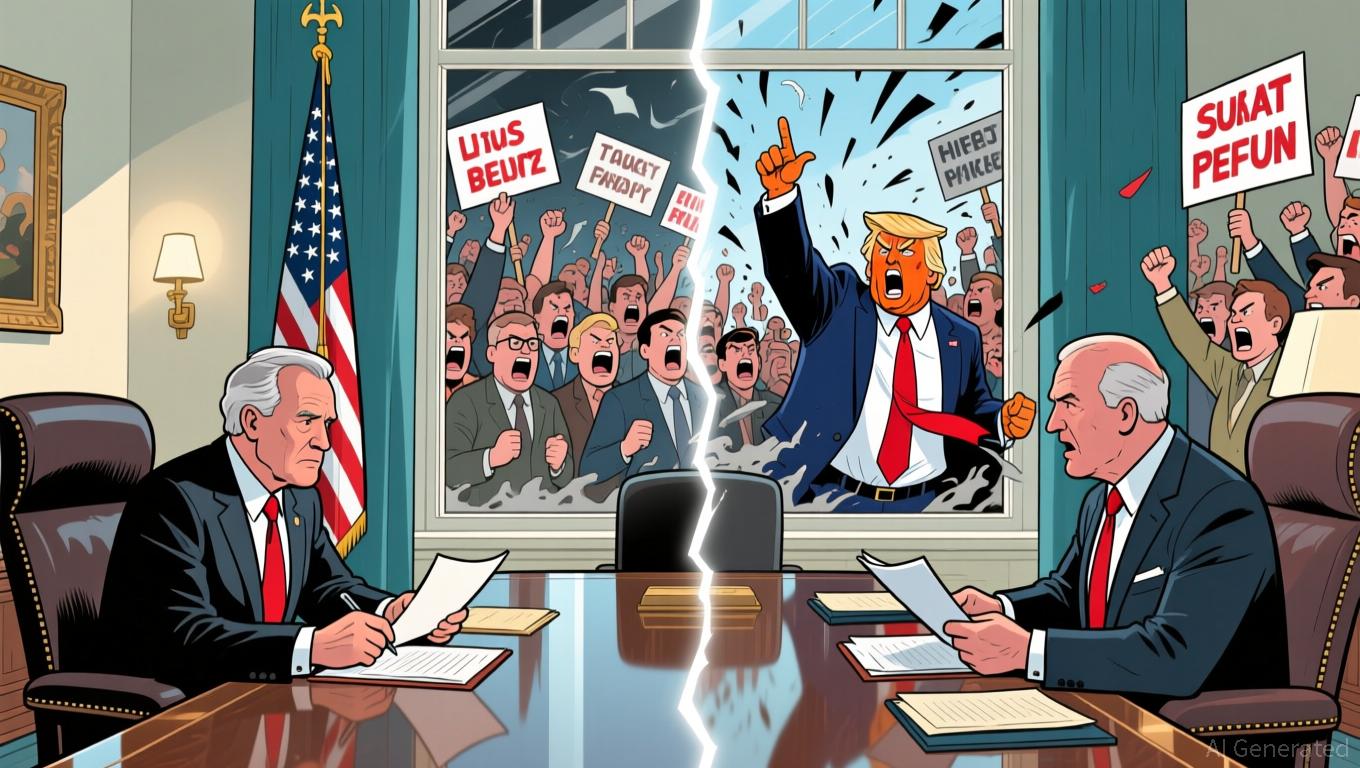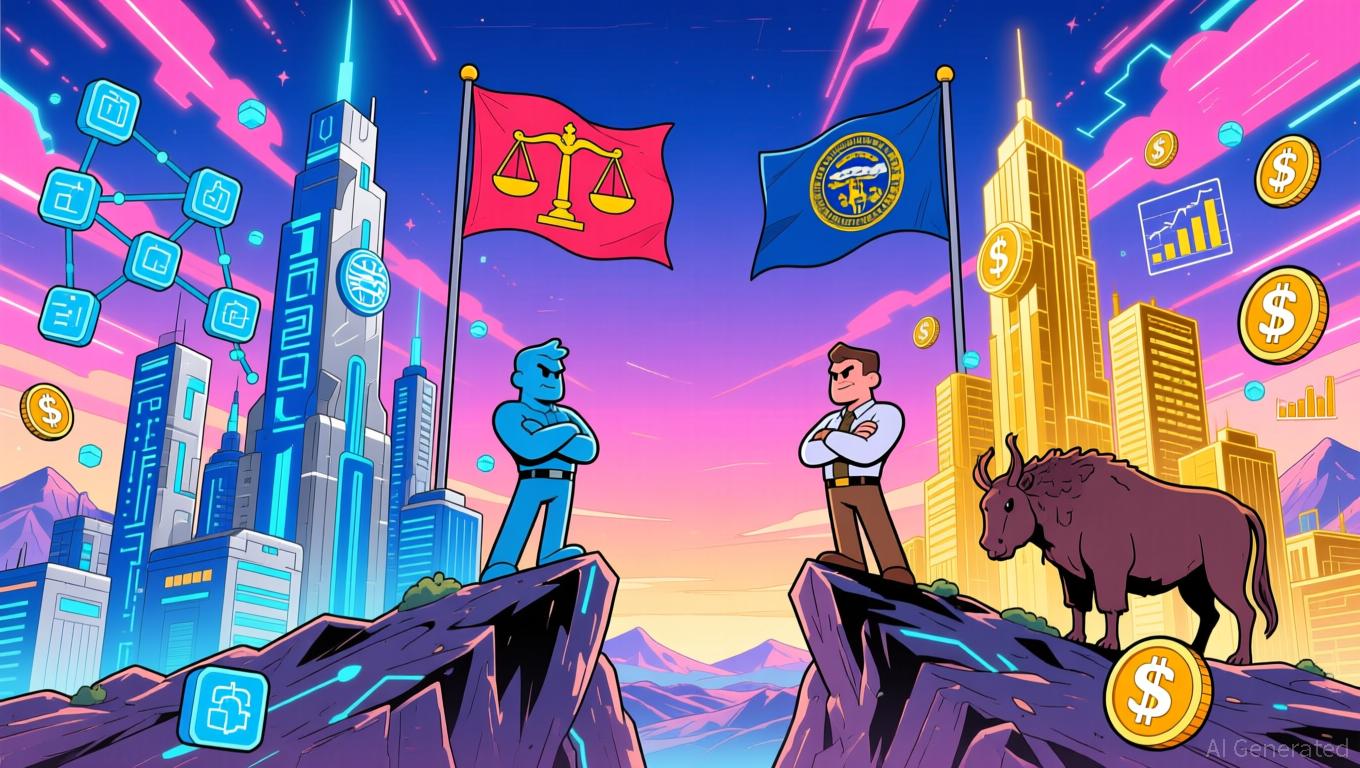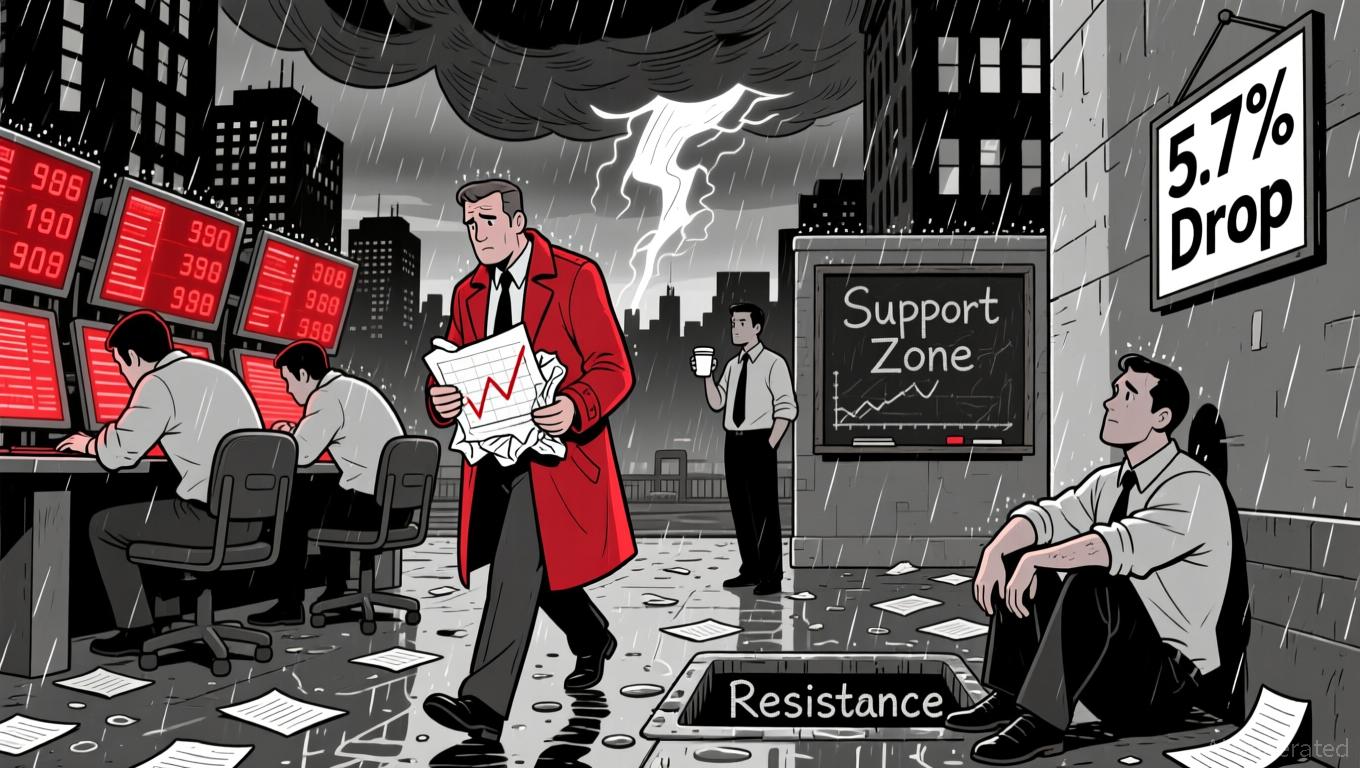Republican Party Splits and Inflation Issues Created Internally Complicate Trump’s Plans for a Second Term
- Trump's second-term agenda faces GOP internal divisions and affordability crises as inflation and tariff policies strain public support. - Republican lawmakers like Rep. Massie challenge Trump's Epstein file stance, exposing party fractures despite official "America First" alignment. - Tariff rollbacks on staples address self-inflicted inflation but fail to resolve core affordability concerns undermining Trump's economic legacy. - Constitutional term limits and waning influence in Trump's "lame duck" per
President Donald Trump’s stronghold over the political landscape is beginning to show signs of strain, as worries about rising living costs and internal rifts within the Republican Party put his bid for a second term at risk. Although the GOP suffered setbacks in pivotal states such as Georgia and Pennsylvania during the November elections, party leaders continue to rally behind Trump, maintaining that his leadership and policy direction are vital to their continued relevance.
Yet, Trump’s authority within the party is not absolute. A new challenge surfaced when dissenting Republicans, including Representative Thomas Massie, advocated for the release of documents related to the Jeffrey Epstein investigation—a move Trump has now supported after previously resisting it.
Adding to Trump’s difficulties, his economic approach—especially his hardline tariff policies—has come under fire for contributing to higher inflation and increased grocery bills. In a notable policy shift, the administration recently reduced tariffs on essential goods like beef and coffee,
The urgency of the affordability issue has grown as Trump enters his "lame duck" phase. With the Constitution preventing him from seeking a third term, Trump’s political path beyond 2030 is increasingly unclear.
Disclaimer: The content of this article solely reflects the author's opinion and does not represent the platform in any capacity. This article is not intended to serve as a reference for making investment decisions.
You may also like
Trump’s Federal Reserve Shakeup Raises Concerns Over Stagflation and Divides Within GOP
- Trump announced his Fed chair pick but withheld the name, criticizing resistance to removing Powell before his 2026 term ends. - Shortlisted candidates include Waller, Bowman, and Rieder, with Trump hinting at a "standard" choice amid political tensions. - The dispute with Rep. Greene over Epstein files highlights GOP fractures, as Trump accused her of betraying party loyalty. - Critics warn politicizing the Fed risks stagflation, while the Epstein files debate underscores transparency vs. loyalty tensio

Nebraska and Wyoming: The Competition for Leadership in Crypto Banking Intensifies
- Nebraska grants first digital asset bank charter to Telcoin, sparking territorial dispute with Wyoming, a crypto banking pioneer since 2017. - 43-day government shutdown disrupted 680,000 Maryland SNAP recipients and caused 5M travel disruptions due to air traffic controller shortages. - Trump's $82M bond purchases and military strikes on drug-smuggling vessels face conflict-of-interest concerns and international backlash. - Fed credibility questioned after ex-governor Adriana Kugler resigns over illegal

YFI Drops 5.76% Over the Past Week as Overall Market Shows Weakness
- YFI fell 5.76% in 7 days and 44% annually, reflecting broader market weakness and risk-off sentiment. - Analysts link declines to macroeconomic uncertainty, profit-taking, and shifting investor psychology despite no direct catalysts. - Mixed sector updates (Eltek, iQIYI , Zymeworks) highlight varied asset-class responses to current economic conditions. - YFI remains a key digital asset indicator, with stabilization signals closely monitored amid ongoing downward pressure.

Bitcoin’s Abrupt Decline: Should Investors See This as a Chance to Buy or a Cautionary Signal?
- U.S. regulatory changes (GENIUS Act) shifted focus to stablecoins, boosting altcoins while Bitcoin lagged with a 6% price rise. - Institutional investors withdrew $2.9B from crypto ETFs in Q3 2025, exacerbating Bitcoin's decline below $90,000 amid high interest rates. - On-chain data shows extreme fear (index at 10) and whale activity, suggesting a mid-cycle correction rather than a prolonged bear market. - Macroeconomic factors, including AI-driven capital shifts and high yields on traditional assets, f